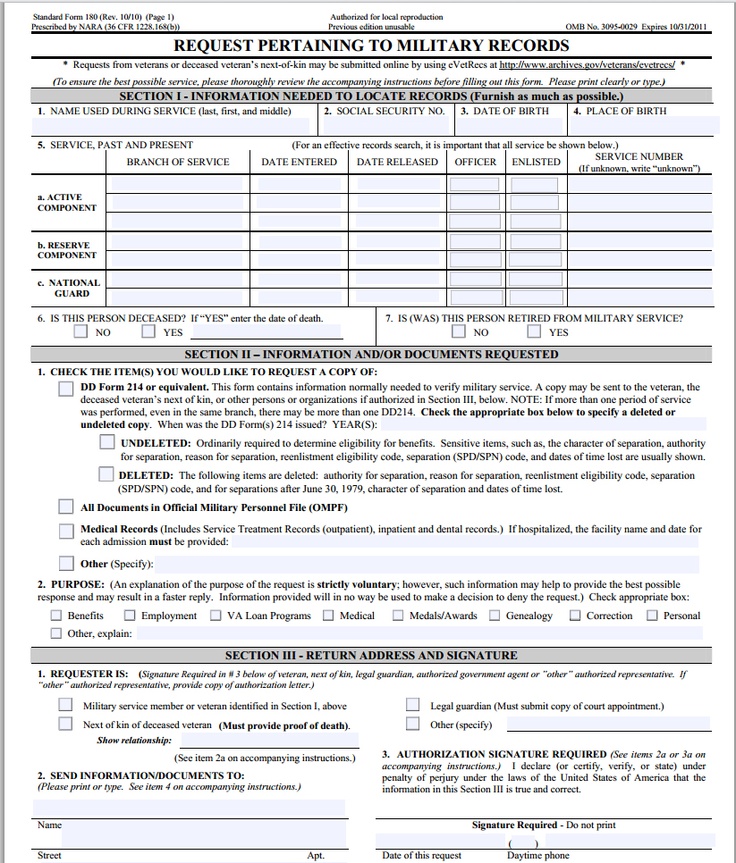Your disability percentage, which will be assigned by the Physical Evaluation Board, will determine whether your disability qualifies you for retirement or separation:
Your Branch of Service may place you on either the Temporary Disability Retired List (TDRL) or the Permanent Disability Retired List (PDRL).
A member of the TDRL or the PDRL is a retired member of the armed forces. You are entitled to all rights and privileges of a military retiree, which may include:
If you meet additional requirements you may also qualify for Combat-Related Special Compensation or Concurrent Retirement and Disability Pay .
Temporary Disability Retirement List
If you are found unfit to perform your duties because of a disability that may not be permanent, you may be placed on the Temporary Disability List (TDRL).
Your retired pay will be computed using one of two methods:

Your pay will be computed based on whichever is more beneficial for you.
While on the TDRL, a physical examination is required at least once every 18 months. If you fail to report for your physical examination, your Branch of Service will remove you from the TDRL list and your retired pay will be suspended until your examination has been completed.
If you were placed on the TDRL prior to January 1, 2017 may remain on the TDRL for up to five years, providing your condition does not change during that time. If you were placed on the TDRL on or after January 1, 2017, you will remain on that list for up to three years providing you condition does not change during that time. If at any time you are found fit for duty, you may be removed from the TDRL and returned to active duty.
If your disability stabilizes and is rated at 30 percent or greater, you will be transferred to the Permanent Disability Retired List (PDRL). If your disability stabilizes and is rated at less than 30 percent and you do not have 20 years of service, you will be discharged from the TDRL with severance pay.
Permanent Disability Retired List
If your disability is found to be permanent and is rated at 30 percent or greater, or you have 20 or more years of service, you will be placed on the Permanent Disability Retired List (PDRL).
Your retired pay will be computed using one of two methods.
Your pay will be computed based on whichever method is more beneficial for you.
If you have been transferred from the TDRL to the PDRL, your retired pay will be recalculated using your most current disability rating.
For more information, submit your question online or call 800-321-1080 to speak to a Customer Service Representative.
If you have concerns about your VA disability rating, please contact the VA at 800-827-1000.
The Department of Defense (DoD) gives DoD Disability Benefits to all active duty service members and Reservists who are discharged from service because of service-connected medical conditions that make the service member Unfit for Duty.
To receive DoD Disability, a service member must first go through the DoD Disability Process.
During the process, a service member’s case is reviewed by two boards: the Medical Evaluation Board (MEB) and the Physical Evaluation Board (PEB).
The MEB first reviews the case and determines which of the service member’s conditions are medically unacceptable. The MEB then submits a report to the PEB. The PEB reviews the case and officially decides which conditions qualify for DoD Disability. To qualify, each condition must meet the requirements for Service-Connection and Unfit For Duty.
Military Disability Ratings are then assigned by the VA to each of the conditions that qualify through the Integrated Disability Evaluation System. These ratings are based on the laws of the VASRD, and they determine (1) whether the service member will be Medically Separated or Medically Retired, and (2) the exact type and quantity of DoD Disability the service member will receive.
If the service member is given a Total Combined Military Disability Rating of 0%, 10%, or 20%, they are medically separated from the military.
All medically separated service members receive a single lump-sum severance payment for their DoD Disability. This payment is equal to 2 months of basic pay for each year of military service they gave. The minimum number of years is 6, so even if they only served for 2 years, their payment would be calculated as though they had served for 6 years. The maximum number of years is 19. Before January 28, 2008, the maximum was 12 years, and the minimum 3.
So, if Bob’s basic pay is $1,000/month and he served for 10 years, then his DoD Disability Severance Pay would be $20,000 (2 months: 2 x 1,000 = $2,000; for 10 years: 2,000 x 10 = $20,000).
Medically separated service members are not given any other benefits for their DoD Disability.
If the service member is given a Total Combined Military Disability Rating of 30% or higher, they are medically retired from the military.
When a service member is medically retired, they receive all the benefits of a service member who retired regularly from the military, including complete medical care, and a monthly disability/retirement payment for the rest of their life.
There are a few different factors used to determine the exact amount of these monthly payments. The basic formula is:
Pay Base x Disability or Retirement % = Monthly Payment
To determine your Pay Base:
To determine your Disability or Retirement %:
You get to choose one of the following (preferably the one that will give you the higher monthly payment):
 5 = 45).
5 = 45).For both of these options, the maximum percentage allowed is 75%. So even if you are given a 100% rating for disability, you can only calculate your pay using 75%. This is because the max you can get for regular retirement with a 30-year cap is 75%, and you can never receive more than the maximum allowed for retirement.
Here’s a few quick examples.
Let’s say Betsy entered the military in 1995, served for 18 years, and received a disability rating of 30%. Her base pay is equal to her average monthly salary for the last 3 years of her career—let’s say $1,000. Since she served for 18 years, her retirement percentage would be 45% (18 x 2.5 = 45), so she would want to choose this over her disability rating. Her monthly payment would then be $450 (1,000 x 45% = 450).
Let’s say Bob entered the military in 1979, served for 6 years, and received a disability rating of 40%. His base pay would be equal to his salary during his last month on active duty. Say, $500. Since he served for 6 years, his retirement percentage would only be 15% (6 x 2.5 = 15), so he would want to choose his disability percentage. His monthly payment would then equal $200 (500 x 40% = 200).
Since he served for 6 years, his retirement percentage would only be 15% (6 x 2.5 = 15), so he would want to choose his disability percentage. His monthly payment would then equal $200 (500 x 40% = 200).
DoD Disability for Reservists is basically the same as it is for Active Duty, but with two main differences:
First, it is important to note that the DoD determines service-connection differently for Reservists than active duty members, so check out our section on Service-Connection for Reservists to make sure your conditions qualify.
Second, the same formulas are used to determine the medical separation and medical retirement pay, but instead of the total number of years in service, Reservists use the total number of qualifying years.
To determine the number of qualifying years, you divide the number of retirement points by 360. So, if you have 7200 retirement points, your number of qualifying years would be 20 (7200 ÷ 360 = 20). Just plug this in the formulas above in place of the total number of years, and that’s it.
Just plug this in the formulas above in place of the total number of years, and that’s it.
It’s also important to note that if you qualify for medical retirement, you do not have to wait until age 60 to start receiving these benefits. You’ll receive your medical retirement compensation right away.
All DoD Disability compensation is taxable unless the condition that qualifies for DoD Disability occurred in combat or combat-related activities.
So, if your condition happened while in combat or doing something directly related to combat, then the money you receive from the DoD is NOT taxable.
If your condition was not caused by combat activities, then your DoD money IS taxable.
Veterans generally cannot receive monthly monetary benefits for both DoD Disability and VA Disability. Instead, whatever money is received from the VA is subtracted from the monetary amount given by the DoD (for both disability retirement and regular retirement).
So, if Bart receives $300/month from the DoD and then starts receiving $200/month from the VA, the payment from the DoD would decrease to $100 (300 – 200 = 100).
Now this may not seem very nice or fair, but there is actually a huge benefit to this: most DoD money is taxable, but VA money is NOT. So taxable money is being replaced by non-taxable money. That’s pretty good…
There are, however, a couple of programs that counteract this principle: Concurrent Retirement and Disability Pay (CRDP) and Combat Related Special Compensation (CRSC).
What are the grounds for dismissal from military service during martial law.
There has been an increase in requests from servicemen to BPD centers regarding dismissal from military service during martial law.
Thus, the procedure for the passage of military service by citizens of Ukraine, their rights and obligations are determined by the Law of Ukraine "On Military Duty and Military Service", regulations on the passage of military service by the relevant categories of military personnel, approved by the President of Ukraine, and other regulatory legal acts.
The law provides for requirements and grounds, in particular, for conscription, military service and dismissal from military service.
The grounds for dismissal from military service are determined by Article 26 of the Law, including during martial law in Ukraine, namely:
a) by age - in case of reaching the age limit for military service;
b) for health reasons - on the basis of the conclusion (decree) of the military medical commission on unfitness for military service with exclusion from military registration;
c) in connection with the entry into force of a guilty verdict of the court, which was sentenced to imprisonment, restriction of liberty or deprivation of military rank;
d) for such family reasons or other valid reasons (if the servicemen have not expressed a desire to continue military service):
in connection with raising a child with a disability under the age of 18;
in connection with raising a child with severe perinatal lesions of the nervous system, severe congenital malformations, rare orphan diseases, oncological, oncohematological diseases, cerebral palsy, severe mental disorders, type I diabetes mellitus (insulin-dependent), acute or IV degree kidney , a child who has received a serious injury, in need of organ transplantation, in need of palliative care, confirmed by a document issued by the medical advisory commission of a healthcare institution in the manner and in the form established by the central executive authority, which ensures the formation and implementation of state policy in the field of healthcare, but which is not established disability;
in connection with the need to provide constant care for a sick wife (husband), child, as well as his parents or wife (spouse), which is confirmed by the relevant medical report of the medical and social expert commission or the medical advisory commission of the healthcare institution;
in connection with the presence of a wife (spouse) from among persons with disabilities and / or one of their parents or parents of a wife (spouse) from among persons with disabilities of group I or II;
in connection with the need to exercise guardianship over a person with a disability recognized by the court as incompetent;
in connection with the need to provide ongoing care for a person with a disability of group I;
in connection with the need to provide permanent care for a person with a disability of group II or for a person, according to the conclusion of a medical and social expert commission or a medical advisory commission of a healthcare institution, requires constant care, in the absence of other persons who can provide such care;
female military personnel due to pregnancy;
female servicemen who are on parental leave until the child reaches the age of three, and also if the child needs home care for the duration specified in the medical report, but not more than until the child reaches the age of six;
one of the spouses, both of whom are serving in the military and have a child (children) under the age of 18;
servicemen who independently raise a child (children) under the age of 18;
three or more children under 18 years of age in the care of a serviceman.
It should be noted that the military personnel referred to in paragraph "d" Art. 26 of the Law (subparagraphs 1-7, 11), at their own request, they can continue military service at their place of residence.
If there are grounds provided for by the Law, dismissal is possible at any stage of military service.
Servicemen who wish to retire from military service must submit a report and documents confirming the grounds for dismissal to their direct commander in the order of subordination.
The commander, after considering and satisfying the report, passes it on to his immediate commander with a note on the petition on the relevant issue. And so on to the commander of a military unit or other official who has the right to resolve issues on the merits.
Sometimes there are cases when the commander, despite the presence of legal grounds for dismissal from military service, refuses to accept reports of dismissal from military service or refuses to consider them. In case of non-acceptance, non-consideration or dissatisfaction of the report by the immediate commander, it is necessary to submit a report to the senior commander explaining the reasons for such submission. And so to an official who is vested with the right to dismiss a subordinate soldier from service or cancel the decisions of previous commanders. The report must reach the last link with the petitions of the direct commanders (chiefs) or the rationale for their absence.
In case of non-acceptance, non-consideration or dissatisfaction of the report by the immediate commander, it is necessary to submit a report to the senior commander explaining the reasons for such submission. And so to an official who is vested with the right to dismiss a subordinate soldier from service or cancel the decisions of previous commanders. The report must reach the last link with the petitions of the direct commanders (chiefs) or the rationale for their absence.
In the report on dismissal from military service, the following should be noted:
1) grounds for dismissal from military service;
2) the opinion of a serviceman about the desire / unwillingness to serve in the military reserve of the Armed Forces of Ukraine in the corresponding military specialty;
3) approval for exclusion from the lists of personnel of the military unit;
4) district (city) territorial recruitment and social support center, to which the serviceman's personal file should be sent.
Persons exempted from military service are obliged to arrive within five days at the regional (city) territorial centers of recruitment and social support (conscripts of the Security Service of Ukraine - to the Central Directorate or regional bodies of the Security Service of Ukraine) at the place of residence for military registration.
Subscribe to our telegram channel t.me/sudua and Twitter, as well as our Facebook and Instagram pages to stay up to date with the most important events.
Recently, the question of when exactly and under what conditions a person called up for military service during mobilization has the right to be dismissed from military service is especially relevant.
This issue is regulated by article 26 of the Law of Ukraine "On military duty and military service" . Thus, the list of grounds for dismissal from military service of persons called up for military service during mobilization during martial law is indicated in paragraph 2 of part 4 of the above article.

The most common grounds for exemption from military service mobilized during martial law are family circumstances or other good reasons.
We are talking, in particular, about the education of a child with a disability under the age of 18, a child with severe perinatal lesions of the nervous system, severe congenital malformations and other diseases according to the list.
Also, the basis for dismissal from military service may be the ongoing care of a sick wife (husband), child, as well as his parents or wife (spouse), which is confirmed by the relevant medical report of the medical and social expert commission or the medical advisory commission of the institution health care 'i.